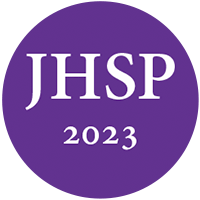The professional home for health service psychologists.
Join a community of 15,000 psychologists and trainees.
Learn it today. Apply it tomorrow.
Connecting you to what you need in your career.
Making a difference.
Work-related upper extremity injuries result in significant functional and psychological symptoms. Early psychological intervention in an interdisciplinary setting is highly effective in promoting adjustment to these injuries. Patients can simultaneously heal physically and adjust emotionally through the use of imaginal exposure, cognitive reprocessing, and behavioral desensitization. This allows for reduction of social stigma, adjustment to altered functioning, and return to a productive lifestyle. The interdisciplinary team approach fosters credibility and acceptance of psychological interventions for this population.
Access continuing education course on CE.NationalRegister.org
Armstrong T. W., Williamson M. L. C., Elliott T. R., Jackson W. T., Kearns N. T., Ryan T. (2019). Psychological Distress among Persons with Upper Extremity Limb Loss. British Journal of Health Psychology, 24(4), 746-763.
Desmond D. M. (2007). Coping, Affective Distress and Psychological Adjustment among People with Traumatic Upper Limb Amputations. Journal of Psychosomatic Research, 62(1), 15-21.
Grunert B. K. & Dzwierzynski W. W. (1997). Prognostic Factors for Return to Work Following Severe Hand Injuries. Techniques in Hand and Upper Extremity Surgery, 1(3), 213-218.
Grunert B. K., Smith C. J., Devine C. A., Fehring B. A., Matloub H. S., Sanger J. R., Yousif N. J. (1988). Early Psychological Aspects of Severe Hand Injury. Journal of Hand Surgery, 13(2), 177-180.
Grunert B. K., Devine C. A., Matloub H. S., Sanger J. R., Yousif N. J. (1988a). Flashbacks After Traumatic Hand Injuries: Prognostic Indicators. Journal of Hand Surgery, 13(1), 125-127.
Grunert B. K., Devine C. A., Matloub H. S., Sanger J. R., Yousif N. J. (1988b). Sexual Dysfunction Following Traumatic Hand Injury. Annals of Plastic Surgery, 21(1), 46-48.
Grunert B. K., Devine C. A., McCallum-Burke S., Matloub H. S., Sanger J. R., Yousif N. J. (1989). On-Site Work Evaluations: Desensitization for Avoidance Reactions Following Severe Hand Injuries. Journal of Hand Surgery, 14(2), 239-241.
Grunert B. K., Matloub H. S., Sanger J. R., Yousif N. J. (1990). Treatment of Post-Traumatic Stress Disorder After Work-Related Hand Trauma. Journal of Hand Surgery, 15(3), 511-515.
Grunert B. K., Devine C. A., Matloub H. S., Sanger J. R., Yousif N. J., Anderson R. C., Roell S. M. (1992a). Psychological Adjustment Following Work-Related Hand Injury: 18-Month Follow-up. Annals of Plastic Surgery, 29(6), 537-542.
Grunert B. K., Devine C. A., Smith C. J., Matloub H. S., Sanger J. R., Yousif N. J. (1992b). Graded Work Exposure to Promote Work Return after Severe Hand Trauma: A Replicated Study. Annals of Plastic Surgery, 29(6), 532-536.
Grunert B. K., Hargarten S. W., Matloub H. S., Sanger J. R., Hanel D. P., Yousif N. J., (1992c). Predictive Value of Psychological Screening in Acute Hand Injuries. Journal of Hand Surgery, 17(2), 196-199.
Grunert B. K., Smucker M. R., Weis J. M., Rusch M. D. (2003). When Prolonged Exposure Fails: Adding an Imagery-based Cognitive Restructuring Component in the Treatment of Industrial Accident Victims Suffering from PTSD. Cognitive and Behavioral Practice, 10(4), 333-346.
Ootes D., Lambers K. T., Ring D. C. (2012). The Epidemiology of Upper Extremity Injuries Presenting to the Emergency Department in the United States. Hand, 7(1), 18-22.
Rosen G. M. & Grunert B. K. (2012). Posttraumatic Stress Disorder in the Workplace. In S. S. Bush & G. L. Iverson (Eds.), Neuropsychological Assessment of Work-Related Injuries (pp. 163-186). Guilford Press, New York, NY.
Silander, N. C. (2018). Life-Changing Injuries: Psychological Intervention throughout the Recovery Process Following Traumatic Amputations. Journal of Health Service Psychology, 44, 74-78.
Smucker M. R. & Niederee J. (1995). Treating Incest-related PTSD and Pathogenic Schemas through Imaginal Exposure and Rescripting. Cognitive and Behavioral Practice, 2(1), 63-92.
U.S. Bureau of Labor Statistics. (2015). Type of Injury or Illness and Body Parts Affected by Nonfatal Injuries and Illnesses in 2014, The Economics Daily, December 2, 2015.
Whyte A. S. & Niven C. A. (2001). Psychological Distress in Amputees with Phantom Limb Pain. Journal of Pain and Symptom Management, 22(5), 938-946.
Copyright © 2025 All rights reserved. National Register of Health Service Psychologists








